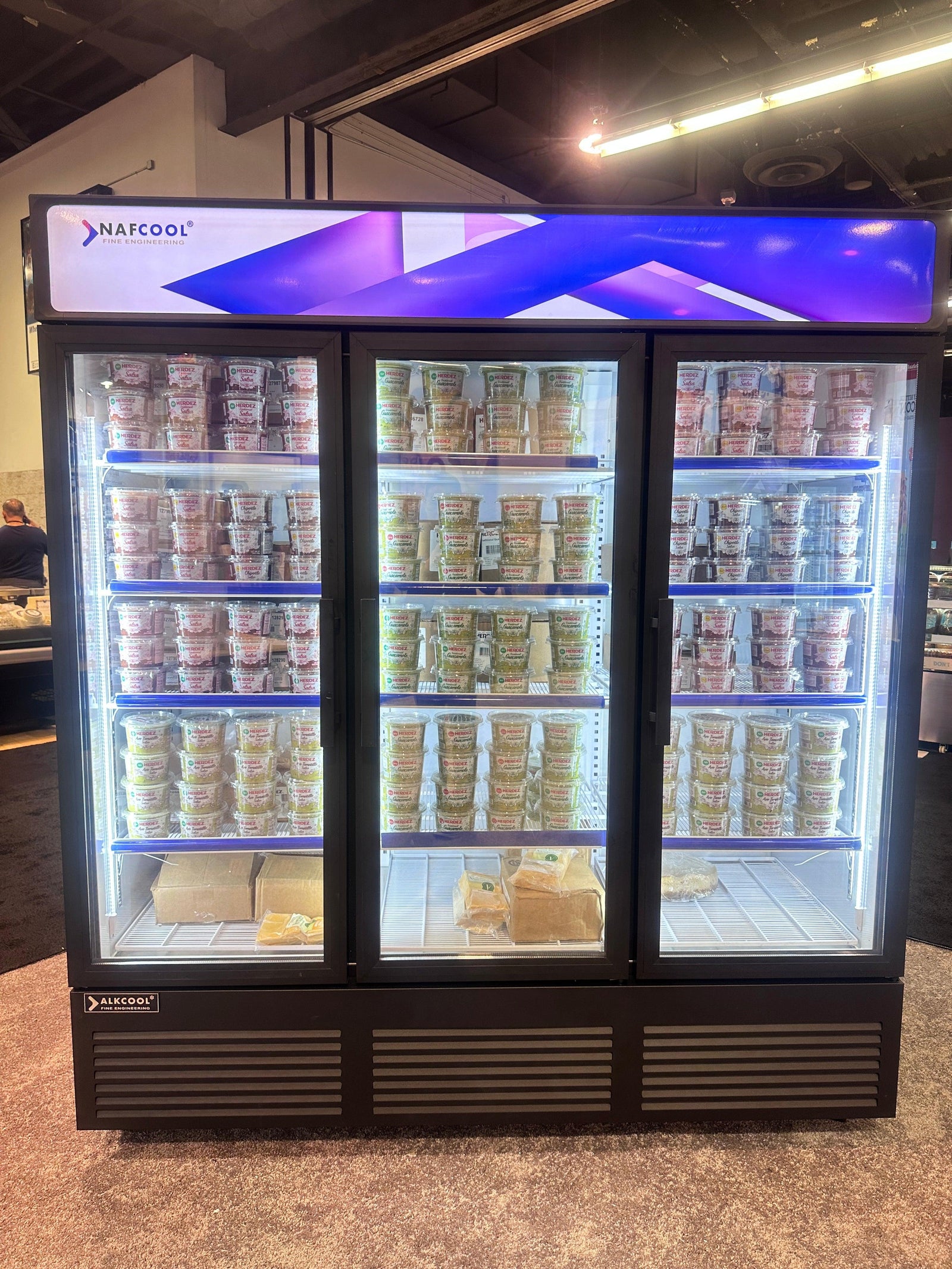Storing food in the refrigerator is a common practice to keep them fresh and prevent spoilage. However, did you know that humidity plays a crucial role in optimizing food freshness and longevity? Discover the essential guide to humidity control in refrigerators and learn how to maximize the shelf life of your food.
Forgetting to adjust humidity levels in the refrigerator can lead to premature spoilage of fruits, vegetables, and other perishable items. High humidity levels can cause condensation, leading to mold and bacteria growth, while excessively low humidity can dry out and wilt produce. Therefore, it’s vital to maintain optimal humidity levels to preserve food quality.
Humidity control in refrigerators is achieved through adjustable vents or dampers. By adjusting these vents, you can regulate the airflow and humidity levels within the refrigerator. Generally, a higher humidity setting is suitable for storing produce, while a lower humidity setting is recommended for items like cheese and deli meats.
Here are some key takeaways from this guide on humidity control in refrigerators:
- Humidity control is crucial for optimizing food freshness and shelf life.
- Higher humidity levels are suitable for storing produce, while lower humidity levels are better for cheese and deli meats.
- Adjustable vents or dampers in the refrigerator allow you to control humidity levels.
- Maintaining optimal humidity levels helps prevent spoilage, mold growth, and wilting.

Personal Experience with Humidity Control
Initially, I struggled to keep my produce fresh in the refrigerator. Fruits and vegetables would often wilt or spoil within a few days. After some research, I realized that humidity control was the key. I adjusted the humidity vents and noticed a significant difference in the longevity of my produce. Berries, which are particularly sensitive to moisture, stayed plump and fresh for over a week.
Humidity control in refrigerators is not just about preventing spoilage; it also affects the taste and texture of food. By maintaining optimal moisture levels, produce retains its natural flavors and nutrients. For instance, lettuce kept at a higher humidity level had crisper leaves and a more vibrant color compared to lettuce stored at a lower humidity setting.

History and Myth of Humidity Control
The concept of humidity control in refrigerators dates back to the early 20th century. In the 1920s, engineers recognized the importance of humidity regulation for food preservation. However, it wasn’t until the 1950s that adjustable humidity vents became a standard feature in home refrigerators.
Over the years, various myths and misconceptions have surrounded humidity control. One common myth is that all food should be stored at high humidity levels. While it’s true that produce benefits from higher humidity, other items like cheese and deli meats require lower humidity to prevent spoilage. Another misconception is that humidity control is only necessary for expensive refrigerators. In reality, even budget-friendly refrigerators have adjustable humidity vents, allowing you to optimize food storage regardless of the appliance’s price.

Hidden Secret of Humidity Control
Beyond preserving food freshness, humidity control in refrigerators offers some hidden benefits. For instance, maintaining a higher humidity level in the refrigerator can help extend the lifespan of cut flowers. The moisture in the air keeps the flower petals hydrated, slowing down the wilting process. Additionally, humidity control can prevent ice crystals from forming on frozen foods, preserving their texture and flavor.
Another lesser-known advantage of humidity control is its impact on energy efficiency. By adjusting the humidity levels appropriately, you can reduce the amount of condensation on the refrigerator coils. This condensation can interfere with the cooling process, leading to increased energy consumption. Therefore, maintaining optimal humidity levels not only keeps your food fresh but also helps save energy.

Recommendations for Humidity Control
To effectively control humidity in your refrigerator, follow these recommendations:
- Identify the adjustable vents or dampers: Locate the vents or dampers in your refrigerator’s crisper drawers or shelves. They are usually located on the sides or back of the compartment.
- Adjust the vents accordingly: For produce, adjust the vents to a higher humidity setting, allowing more moisture to circulate. For cheese and deli meats, adjust the vents to a lower humidity setting to reduce moisture exposure.
- Monitor food regularly: Keep an eye on your food to gauge whether the humidity levels are optimal. If produce starts to wilt or cheese dries out, adjust the vents as needed.

Humidity Control for Different Food Types
Different food types have varying humidity requirements. Here’s a quick guide:
- Fruits and vegetables: Store at high humidity levels (85-95%) to maintain their crispness and freshness.
- Leafy greens: These require even higher humidity levels (95-100%) to prevent wilting.
- Cheese and deli meats: Store at low humidity levels (30-45%) to prevent mold growth and preserve their flavor.
- Bread and pastries: Keep at low humidity levels (50-60%) to prevent sogginess and mold.

Tips for Optimal Humidity Control
Here are some additional tips for maintaining optimal humidity levels in your refrigerator:
- Use airtight containers: Store produce and leftovers in airtight containers to prevent moisture loss or absorption from other food items.
- Wipe down spills immediately: Clean up any spills or condensation inside the refrigerator promptly to prevent excess moisture.
- Avoid overfilling the refrigerator: Overcrowding can restrict airflow and affect humidity levels.

Smart Refrigerator Features
Some modern refrigerators come equipped with smart features that enhance humidity control. These features can include:
- Automatic humidity sensors: These sensors monitor humidity levels and adjust the vents accordingly, ensuring optimal conditions for different food types.
- Humidity-controlled drawers: Separate compartments with dedicated humidity controls allow you to store food items with varying humidity requirements.

Fun Facts about Humidity Control
Here are some interesting facts about humidity control in refrigerators:
- The optimal humidity level for cheese storage is around 35%, which is similar to the humidity levels found in cheese caves.
- Humidity control can also help preserve the flavor and texture of chocolate. Storing chocolate at a humidity level of around 65% prevents it from drying out or absorbing moisture.
- In some countries, refrigerators have a dedicated “herb drawer” with higher humidity levels to keep herbs fresh for longer.

How to Troubleshoot Humidity Control Issues
If you’re experiencing issues with humidity control in your refrigerator, here are some troubleshooting tips:
- Check the vents or dampers: Ensure that the vents are not blocked or obstructed, allowing proper airflow.
- Inspect the gasket: A damaged or loose gasket can allow moisture to escape, affecting humidity levels.
- Consider the refrigerator’s age: Older refrigerators may have less efficient humidity control systems.

What if Humidity Control Isn’t Enough?
In some cases, humidity control alone may not suffice to prevent food spoilage. Additional measures may be necessary, such as:
- Use moisture-absorbing materials: Place baking soda or silica packets in the refrigerator to absorb excess moisture.
- Rotate food items: Regularly rotate items in the refrigerator, ensuring that older items are consumed first.
- Use a vacuum sealer: Vacuum sealing food removes air and reduces moisture loss, extending shelf life.
Here’s a listicle summarizing the benefits of humidity control in refrigerators:
- Extends the shelf life of fruits, vegetables, and other perishable items.
- Preserves the flavor and texture of food.
- Prevents mold and bacteria growth.
- Reduces energy consumption.
- Keeps cut flowers fresh for longer.
- Protects frozen foods from ice crystal formation.
Question and Answer Section
- Question: How often should I check the humidity levels in my refrigerator?
- Answer: Monitor food regularly for signs of wilting or drying out. Adjust the humidity vents accordingly.
- Question: What should I do if my refrigerator does not have adjustable humidity vents?
- Answer: Place moisture-absorbing materials like baking soda or silica